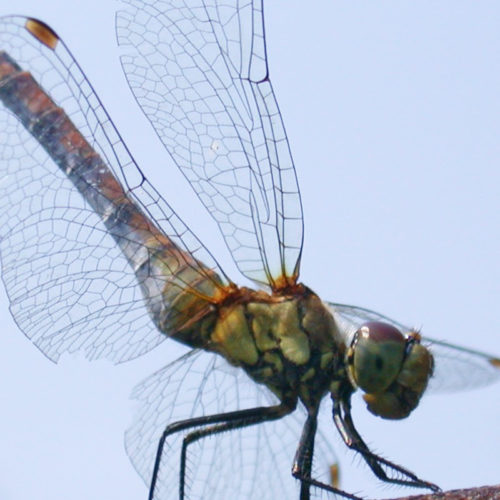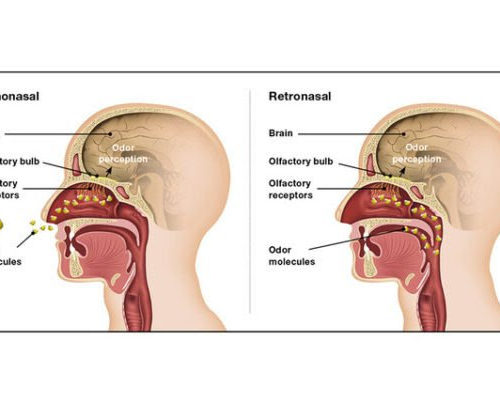THE GEISEL SCHOOL OF MEDICINE AT DARTMOUTH Findings from a new Geisel-led study, published in the Journal of General Internal Medicine, reveal that there is substantial variation across different regions of the country in the intensity of fracture-associated drug (FAD) use among long-term care facility residents, and that areas with greater use of these prescription drugs...
Identifying ‘ugly ducklings’ to catch skin cancer earlier
by Harvard University The researchers used their deep learning neural network to assign an “ugly duckling score” to each lesion based on how much it differed from other lesions on the same patient’s skin, identifying those most likely to be cancerous. Credit: Wyss Institute at Harvard University Melanoma is by far the deadliest form of skin cancer,...
Proprioception, our imperceptible sixth sense
FEBRUARY 17, 2021 by Fabrice Sarlegna, Chris Miall, Jonathan Cole and Robert Sainburg, The Conversation Proprioception makes it possible to situate the body in space. Credit: Pixabay, CC BY Vision. Hearing. Smell. Taste. Touch. Proprioception. Proprioception? Few people are familiar with this sense, although its pioneer studies in the 19th century were by some of the giants...
COVID-19 linked to potentially dangerous eye abnormalities
RADIOLOGICAL SOCIETY OF NORTH AMERICA IMAGE: 56-year-old man presenting with severe COVID-19. Diagnosis of SARS-CoV-2 infection was based on a positive quantitative real-time RT-PCR test for SARS-CoV-2 nucleic acid performed on nasopharyngeal and lower respiratory tract swabs. The patient had been hospitalized in intensive care unit for 20 days when an MRI was performed due...
Brief survey tool tracks symptoms, aids in evaluating effectiveness of treatment
REGENSTRIEF INSTITUTE IMAGE: Researchers from Regenstrief Institute and Indiana University School of Medicine have developed and validated a short, clinically practical questionnaire to help patients report symptoms and assist healthcare providers in assessing the severity of symptoms, and in monitoring and adjusting treatment accordingly. CREDIT: REGENSTRIEF INSTITUTE INDIANAPOLIS — Researchers from Regenstrief Institute and Indiana...
Large-scale study finds genetic testing technology falsely detects very rare variants
by University of Exeter Credit: CC0 Public Domain A technology that is widely used by commercial genetic testing companies is “extremely unreliable” in detecting very rare variants, meaning results suggesting individuals carry rare disease-causing genetic variants are usually wrong, according to new research published in the BMJ. After hearing of cases where women had surgery scheduled after...
Exercise now proven to have mental health benefits for prostate cancer
by Edith Cowan University New research has found exercise helps men with prostate cancer reduce symptoms of depression and anxiety. Credit: Edith Cowan University New Edith Cowan University (ECU) research has found that exercise not only has physical benefits for men with prostate cancer, it also helps reduce symptoms of depression and anxiety. Up to one...
In a rare legal defeat, Bristol Myers Squibb and Sanofi fined $834M for ‘deceptive marketing’ on best-selling blood thinner Plavix
Amber Tong Senior Editor By the time the FDA slapped a black box warning on Plavix in 2010, the blockbuster blood thinner had been on the market for 13 years and reaped billions of dollars — enough to give it a solid spot among the best-selling drugs of all time even to this day, despite...
Dragonfly-inspired splint locks into place to support injured joints
By Nick Lavars February 14, 2021 Scientists have taken inspiration from dragonfly wings to develop new splints for injured joints that offer support but don’t restrict movementStanislav GorbVIEW 3 IMAGES Taking inspiration from some of the unique attributes of dragonfly wings, scientists at Germany’s Kiel University have developed a new type of splint for injured...
Taste and its two ways to the brain
There are a few ways we perceive food, and not all are particularly well-understood. We know that much of it happens in the olfactory bulb, a small lump of tissue between the eyes and behind the nose, but how the stimuli arrive at this part of the brain is still being worked out. How these...








